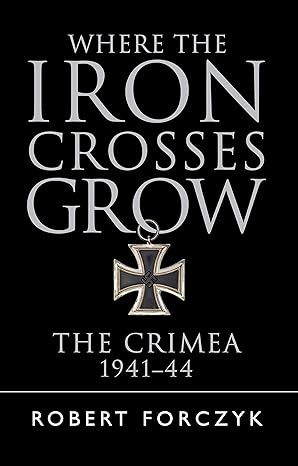
Title: Where The Iron Crosses Grow – The Crimea 1941-44
Author: Robert Forczyk
Publisher: Osprey Publishing
Publication Date: 08/11/2024
ASIN: 1472816781
Read BookBook Description:
“Where The Iron Crosses Grow: The Crimea 1941-44” by Robert Forczyk is an in-depth examination of the intense battles that took place on the Crimean Peninsula during World War II. The book provides a detailed account of the military campaigns that unfolded between 1941 and 1944, highlighting the strategic importance of Crimea as a focal point of conflict between Nazi Germany and the Soviet Union. Forczyk meticulously explores the various military operations, including the Siege of Sevastopol, the German conquest of Crimea, and the Soviet counter-offensive that ultimately reclaimed the peninsula. Through his vivid narration and comprehensive analysis, Forczyk underscores the significance of Crimea as a critical theater of war that influenced the broader outcomes of the Eastern Front.
Forczyk’s book delves into why Crimea was fiercely contested during World War II. The peninsula’s strategic location in the Black Sea made it a vital asset for both the Axis and Soviet forces, serving as a base for naval operations, a launching point for offensives, and a defensive stronghold. The terrain of Crimea, with its rugged mountains and limited access points, created significant challenges for both attackers and defenders, making it a battleground where military strategy, logistics, and leadership played crucial roles in determining the outcome of engagements.
One of the central themes in Forczyk’s work is the interplay between geography and military operations. The author illustrates how the unique topography of Crimea shaped the strategies employed by both sides, influencing the movement of troops, the positioning of artillery, and the success of defensive operations. This focus on the geographical and logistical aspects of warfare in Crimea provides readers with a nuanced understanding of why the region was so vital to the war efforts of both Germany and the Soviet Union.
Understanding the strategic importance of Crimea during World War II is essential for readers who seek to grasp the current geopolitical tensions between Russia and Ukraine, particularly regarding Crimea. The peninsula’s historical significance as a strategic asset has not diminished over time; it remains a critical location for military and political power in the Black Sea region. Russia’s annexation of Crimea in 2014 and its ongoing military presence in the area can be seen as a continuation of the historic struggle for control over this strategically vital region.
Forczyk’s exploration of the WWII-era conflicts in Crimea offers valuable insights into the enduring importance of the peninsula. The same factors that made Crimea a critical battleground during World War II—its strategic location, its role as a naval base, and its difficult terrain—continue to make it a focal point in modern military and geopolitical conflicts. By examining the historical context provided in “Where The Iron Crosses Grow,” readers can better understand the motivations behind Russia’s actions in Crimea and the broader implications for the security and stability of the region. This understanding is crucial for interpreting current events and anticipating future developments in the ongoing conflict between Russia and Ukraine.